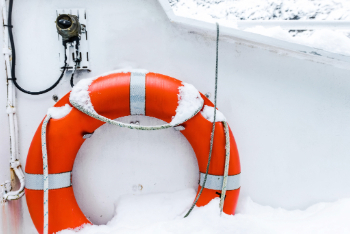INDEPENDENT DEALER
Manalapan Township, NJ | (732) 288-4303
OUR BLOG
Prep your watercraft for the off-season the right way! For expert tips, check out this boat winterization guide from AMSOIL: SGT. Airborne in Manalapan Township, NJ.

Winter is knocking at the door, and for boat owners, that means it’s time to get serious about winterization! This vital process is more than just a seasonal task; it’s your boat’s best defense against the harsh cold. Water can freeze in engines and hoses when temperatures drop, leading to cracks that can cost a pretty penny to repair. And if you leave fuel untreated, it can turn into a gooey mess that disrupts your boating plans.
But don’t worry! In this boat winterization guide, we’ll break down everything you need to know to keep your vessel safe and sound through the winter months. By investing a little time now to winterize and maintain your boat, you’ll set yourself up for smooth sailing when the sun shines again. Let’s get started!
Don’t skimp on your boat’s care. Contact SGT. Airborne in Manalapan Township, NJ, at (732) 288-4303 for top-notch AMSOIL products. You can also check out AMSOIL's online store to restock your essential supplies. Your boat deserves the best!
Part 1: Winterizing Your Boat
Preparing for Winterization
- Drain the Engine:
Start by draining water from your engine block, oil pan, and cooling system. This step is crucial to prevent freezing and damage. Use fogging oil to protect internal components—just spray it into the intake while running the engine to create a protective barrier.
- Empty the Fuel Tank:
Leaving fuel in the tank can lead to condensation and potential damage. You can either drain the tank completely or add a fuel stabilizer to prevent degradation during winter. If you choose to drain, ensure you follow local regulations for disposing of fuel safely.
- Clean the Boat:
A thorough cleaning is key to keeping mold and mildew at bay. Use marine-grade cleaners to scrub all surfaces, and finish off with a polish for added protection against winter's harsh elements.
Protecting the Engine
- Winterize the Cooling System:
Flushing your cooling system with marine-grade antifreeze prevents any residual water from freezing. This is a crucial step to avoid expensive repairs when spring rolls around.
- Protect the Engine:
Cover your engine with a high-quality, marine-grade cover to shield it from snow, ice, and moisture. Additionally, placing moisture-absorbing packets in the engine compartment can help prevent corrosion.
Protecting the Hull and Interior
- Clean the Hull:
Washing and waxing your hull is essential for protecting the gel coat. Use marine-grade wax to provide a durable barrier against the elements.
- Protect the Interior:
Clean and dry the interior thoroughly to avoid mold and mildew. Use marine-grade cleaners and consider a dehumidifier to keep moisture at bay during the winter months.
- Cover the Boat:
A high-quality boat cover is your best defense against snow, ice, and harmful UV rays. Ensure the cover is secured tightly to prevent wind damage throughout the winter.
Your boat deserves premium protection. Call SGT. Airborne in Manalapan Township, NJ, at (732) 288-4303 to purchase top-notch formulas like AMSOIL 10W-40 100% Synthetic Marine Engine Oil. Plus, don’t forget to check out AMSOIL’s online store for all your marine care needs. Adventure awaits—make sure your boat is ready!
Part 2: Mid-Season Maintenance
Spring Cleaning
- Remove the Cover:
When it’s time to uncover your boat, do so carefully to avoid damaging it. Check the cover for any signs of wear that may need repair before the next winter.
- Clean the Hull and Interior:
Once uncovered, wash and wax the hull again and clean the interior thoroughly. Disinfect surfaces to eliminate any lingering odors from winter storage.
Engine Checkup
- Inspect Your Engine:
Look for signs of wear, damage, or corrosion. Check hoses and connections for fraying, and lubricate moving parts for optimal performance.
- Change the Oil and Filter:
Use high-quality marine-grade oil and filters. Refer to your unit's manual for the correct oil change procedure. This will ensure that your boat is prepared for the next season
Fuel System Maintenance
- Check the Fuel:
Inspect the fuel for water contamination and debris. Use a fuel filter to remove impurities.
- Add a Fuel Stabilizer:
To prevent fuel deterioration, add a fuel stabilizer to the tank. Follow the product instructions for the correct dosage.
In Conclusion
Now you’re equipped to winterize your boat and shield it from New Jersey’s winter weather. Follow these steps for a smooth sailing season ahead, and don’t hesitate to consult a marine professional if you need help. Happy boating!